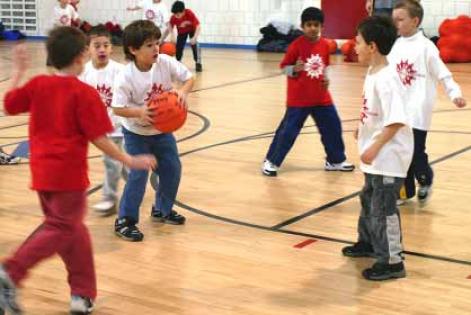Let me say at the outset that I don’t think our tally of medals at the London Olympic Games to date is disappointing. Getting to the Olympic Games, and winning any hue of medal, is an achievement most of us can only imagine.
Getting our children moving:Australia's Olympic boss, John Coates, is right to call for more sport in schools - but for the sake of our kids, not medals.
Date: August 07 2012

But in calling for sport to be made a higher priority in the school curriculum, AOC President, John Coates has the policy outcome right even if his rationale – to get more medals - may be debatable.
Coates believes that, in order to “find the next Cathy Freeman or Ian Thorpe”, the talent pool needs to be increased which requires more young people playing sport in the first place. He also made the point that, unlike England, which made it a strategic objective to leverage the London Games by increasing the number of young people playing sport throughout the United Kingdom, Australia more or less sat back and hoped it would happen by osmosis after the Sydney 2000 Olympic Games.
Making sport a compulsory part, or higher priority, of the school curriculum – as it once used to be – is essential for another, and much more compelling, reason: and that is the health of our children. Physical activity is one of the key factors that contribute to long term better health outcomes through a reduction in the incidence of chronic disease, and there is increasing evidence to show that physical activity and other health promotion strategies also have a positive impact on educational and social outcomes.
While community sporting clubs also have an important role to play in helping our kids be physically active, it is not enough as we've written previously about in Motherpedia.
In fact, in the 14 years from 1995 to 2009 (the latest available data from the ABS), which includes the fillip we planned to get from the Sydney 2000 Olympics, participation in organised sport as a proportion of the 5-14 year old population increased by only 0.4% to 63.1% (to 70% if dancing is included). For girls in that time, the proportion actually decreased by 2.6 percentage points while it increased for boys by 3.3 percentage points.
Taken together with the fact that the kids who are least likely to play organised community sport are those either from one parent families, or where one or both parents are unemployed, then the argument for sport in schools is even stronger. The participation rate in organised sport amongst 5-14 year old children from one parent families where the parent is unemployed is only 37%, so these children potentially face the prospect of no sport at school as well as community sport being unaffordable. Of itself, socio-economic profile is a risk factor for chronic disease – and yet these children are burdened with another chronic disease risk factor by being potentially locked-out from participating in physical activity: a double jeopardy over which they have no control.
The picture gets worse again if we look at the attrition rate after children reach 14 years of age. ABS data shows the participation rate for 15-17 year olds is 36% overall which is a significant drop for both boys and girls.
When questioned on ABC Radio on Monday about Coates’ suggestion that sport be made a higher priority in schools, Sports Minister Kate Lundy was quick to point the finger at the States and Territories, telling Radio National’s Fran Kelly that she “personally would love to see more [sport in schools] but it’s up to the States and the schools themselves.”
"I know a great case has been made for sport in that national curriculum, so we'll see how that plays out,” she said.
As Federal Sports Minister, Lundy is the person holding the position that can actually do something; and she should be using her position and influence to do much more than to “see how [that] plays out.”
In 1976 after Australia won just one Silver and four Bronze medals, the Fraser Government was moved to establish the Australian Institute of Sport – an institution that has served elite sports well and has been emulated around the world.
Both Lundy and Coates agree that the quantum of funding is not the issue – sport received “record” funding of approximately $307 million in the 2012-13 Federal Budget – but something isn’t going as well as it could or, just as importantly in terms of the national narrative, as well as we would like it to at the moment.
Coates is right. It’s time to put funding priority for sport into our children. That starts with school as that’s where they spend the bulk of their time.
The Rudd/Gillard governments have brokered National Partnerships with States and Territories across almost every area of Commonwealth-State activity and funding. In the schools sector alone, there are three National Partnerships addressing disadvantage, teachers and school leaders and addressing literacy and numeracy. They provide a framework for Commonwealth funding against the achievement of agreed, national benchmarks.
When the Olympics is over, and independent of the reviews that individual sports will conduct of their own performance, it is time for Kate Lundy to take the lead and for Australia’s nine Sports Ministers – perhaps joined by their Health and Education counterparts – to get together to broker a National Partnership in Sport.
It’s not about the medals. It’s about Australia’s children.
***
This article also appeared on SportBizInsider.
|
||||||||||||||||||||||||||||||||||||







 Agree (0)
Agree (0) Disagree (
Disagree (











__small.png)










